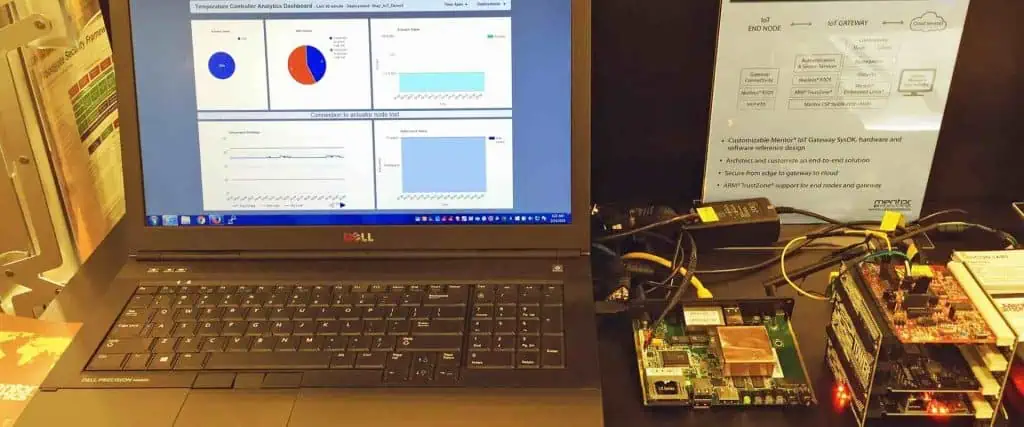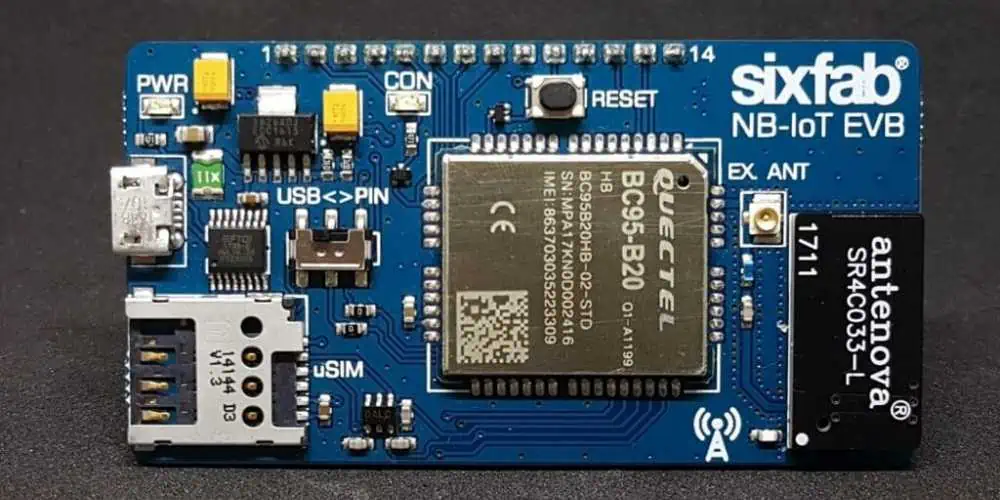The swift advancement of technology has caused a merging of boundaries among various fields, especially in the domain of IoT embedded systems, where the labels IoT & embedded systems have been intermingled to denote the same thing. However, even though some resemblances exist, an embedded system & IoT are distinct concepts.
The inception of embedded systems dates back to 1965 when Autonetics, a company, created a miniature computer for employment in a missile navigation system.
Embedded systems are independent devices typically engineered to perform a particular function. An Internet of Things embedded system, on the other hand, is the embedded system that is also internet-enabled, enabling it to exchange information with other Internet of Things embedded systems.
Internet of Things embedded systems encompass our surroundings, including
- Set-top boxes
- POS terminals
- Various medical devices
- Smart appliances such as refrigerators, bicycles, and fitness trackers
- Parking meters
- And more
This article will comprehensively examine embedded systems for IoT devices. It will cover what an embedded system for the Internet of Things entails, its benefits, and practical applications.
Distinguishing between IOT & embedded system appliances
Let’s examine the contrast between these two expressions:
What is IoT system?

Nowadays, “smart” appliances can connect to the internet and other appliances to facilitate routine tasks. For instance, a smart refrigerator can detect its contents, including expiration dates, and relay this information to its owner. This represents a standard use case of IoT in daily life.
What is an Embedded IoT system?
The embedded system is a small-scale computer developed for a particular function. It typically contains a microcontroller or microprocessor, the integrated circuit comprising memory, processor, & I/O peripherals on a single chip.
The essential characteristic of the embedded system is its ability to execute digital processing. This sets it apart from virtual hardware devices that solely comprise circuitry and perhaps a battery.
Embedded systems frequently feature sensors that enable them to monitor environmental variables.
Difference between IoT and Embedded IoT
While an embedded system may not necessarily possess internet connectivity, an IoT(internet of things)embedded system does. The distinction between an embedded system and IoT is that an embedded system can be part of IoT. Embedded systems predating IoT did not have internet connectivity, making IoT(Internet of things) embedded systems typically inclusive of a wider variety of appliances and use cases.
What is an embedded system in IoT?
An IoT(Internet of things) embedded system is an embedded system with an internet connection. Another term for an IoT(Internet of things) embedded system is the “smart” application. A device does not require a touchscreen or keyboard to qualify as an IoT(Internet of things) embedded system, although such peripherals can be added.
Types of Embedded IoT

An IoT-embedded system requires software to execute its intended purpose, which can take the form of either firmware /an embedded operating system. The software serves as the enabling factor for the IoT (Internet of things) embedded system to establish communication with other IoT-embedded devices.
In embedded systems, the phrases “embedded devices” and “embedded systems” are often used interchangeably, but embedded devices are typically components of a more extensive embedded system geared toward IoT applications. To distinguish between the two, an embedded device is a specialized piece of hardware designed to fulfill a singular or limited set of functions. These Single Purpose Appliances or Dedicated Devices are part of IoT(Internet of things) embedded systems crafted to execute a specific program or task unique to a specific business.
Instances of IoT(Internet of things) embedded systems that are designed for a sole function include:
- Kiosk devices
- POS Solutions
- Self-checkout systems
IoT embedded systems are extensively utilized in various industries, including retail, automotive, consumer products, healthcare, and others.
The contrast between IoT & Embedded IoT systems
In a single word, the disparity between IoT & embedded systems is “connectivity.” An embedded system can include a pacemaker, for instance, but when the device is enabled to communicate with the external environment, such as transmitting heart rate data to the central database, it transforms into an IoT(consumer products) embedded system
Another contrast between the embedded system & IoT(Internet of Things) is that IoT pertains to a group of devices that characterize the newly interconnected world. In contrast, the embedded system pertains mainly to the hardware employed in these applications.
The primary differentiation between the embedded operating system & IoT is that the Internet of Things (IoT) operating system must facilitate connectivity. The capacity for networking IoT embedded system appliances is what sets them apart from regular embedded systems.
Each IoT application involves the embedded system as an integral component, which is why it is called an IoT embedded system. The embedded system is created initially, and then features are added to transform it into an Internet of Things (IoT) device.
Embedded systems, such as robotic systems in manufacturing/data warehouses, can be highly complex in their own right. However, unless the application can communicate & establish connectivity with other IoT (Internet of Things) embedded systems, its role as a standard embedded system will be limited to its sole intended purpose.
The difference between an embedded system & the IoT embedded system lies solely in its capability to communicate.
The importance of Embedded IoT

To better understand the difference between an embedded system and IoT, it could be helpful to examine some real-world use cases. Here are a few examples that further clarify the contrast between an IOT and an embedded system.
To comprehend the contrast between an IOT and an embedded operating system, it is essential to note that both IoT(Internet of Things) embedded system appliances and non-IoT embedded system appliances rely on some form of software to function, whether it is firmware, bootloaders, drivers, or a comprehensive embedded operating system.
Merely being an IoT( Internet of Things) embedded system does not necessarily require a complete operating system, though it is typically the case. Appropriate Rating systems are appropriate for use in some embedded systems, such as Linux / Android.
By installing specifically modified versions of Android on the Internet of Things( IoT )embedded system, the appliance will be capable of:
- Obtain OTA updates
- Enjoy the benefits of Mobile Device Management, such as remotely managing an IoT( Internet of Things) embedded system.
Android is a suitable operating system for IoT( Internet of Things) embedded systems. In addition, the introduction of the Raspberry Pi has made mass production of IoT( Internet of Things) embedded systems much more accessible, particularly after the release of its Generation 3 models that include built-in Bluetooth & WiFi connectivity. By installing Android on your Raspberry Pi 3 B+, the IoT(Internet of Things) embedded system can access Raspberry Pi Fleet Management features (like MDM) mentioned earlier.
